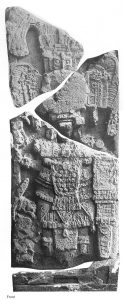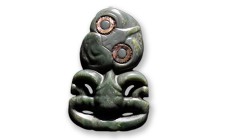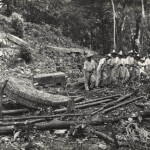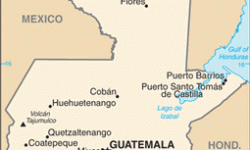Piedras Negras Stela 9
Author: Donna Yates
Last Modified: 22 Aug 2023

Maya sculpture that was stolen in the 1960s and reappeared for sale in Paris in 2019.
Piedras Negras Stela 9 was found and photographed by early archaeologist Teobert Maler during his visits to the Guatemalan site in 1899. Maler found the stela, which was in three fragments, on a large terrace to the east of structure J-3. (Stuart and Graham 2003). The front of the stela depicted a standing male figure with an elaborate owl-headed headdress. By inspecting Maler’s photographs, Stuart and Graham (2003) note that although the fragment containing the headdress and representing the upper portion of the stela was in good condition, the other two fragments were moderately weathered.
When archaeologist Ian Graham visited the site again in 1974, he recorded that the headdress element was gone (David Stuart, Personal Communication). This means that at some point between 1899, when Maler photographed the stela, and 1974 the fragment was stolen. It is unclear exactly when the theft occurred, however the most likely scenario places the theft sometime in the 1960s (Knight 2019) when similar monuments in the region were known to have been plundered. Staff from logging camps in Tenosique, Mexico are thought to have been responsible for looting in the area at the time (Stuart, quoted in Knight 2019). This timeline aligns with the limited provenance information available related to the fragment’s commercialisation (see below).
In September 2019, the missing headdress portion of the stela appeared as lot number 55 in a sale by the Millon auction house which was to be held on the premises of Drouot in Paris (Millon 2019). Described as an “exceptional bas-relief”, and with a price estimate of between 25,000 and 35,000 euros, neither Piedras Negras nor Guatemala was mentioned.
The fragment had been consigned to Millon from the collection of Manichak and Jean Aurance (Knight 2019). The French language version of the auction listing recorded the provenance as being in the possession of Parisian dealer Pierre Langlois in May of 1965. Langlois was recorded as having purchased the fragment from USA-based dealer Earl Stendahl in the “années 60”.
When the auction catalogue was shared online, numerous parties identified the fragment as the missing piece from Piedras Negras Stela 9. This included Guatemala’s UNESCO delegation in Paris, who immediately began working with UNESCO and French authorities to halt the auction.
On 11 September 2019, the lot was withdrawn from sale “to allow amicable negotiations between the seller & Guatemala” according to a Tweet posted by the Drouot account. The tweet also asserted that “French & Guatemalan authorities have recognised the lawful and legitimate property of the fragment of the stele to the seller”, a surprising assertion for some observers given that Guatemala’s Decree No 425 of 1947 does not allow any circumstance under which the fragment could have been legally exported or be owned by anyone other than the Republic of Guatemala. Official communications from Guatemala on the same day makes no mention of Guatemala denying ownership of the fragment (e.g. https://www.anonymousswisscollector.com/wp-content/uploads/Comunicado-Estela-9.jpg), and personal communication at the time indicated that this was not Guatemala’s position.
In October 2021, the fragment of Stela 9 was formally returned to Guatemala in a voluntary handover from Manichak Aurance (UNESCO 2021).
The recognisability of the Piedras Negras Stela 9 fragment calls into question the amount of due diligence that the auction house conducted in advance of the sale. Photographs of the looted portion of the stela as well as its looting story have been on the website of Harvard University’s Peabody Museum for years, as well as available within their archives for decades. It is certain that information that would have led to the identification of the fragment as being stolen from Piedras Negras was freely and openly available online, in a well-known repository of data concerning Maya monuments.
[Image by Maler via Harvard Peabody Museum]
References
Millon (2019) Art Précolombien. 18 September. https://web.archive.org/web/20190910132629/https://www.drouot.com/lots/10634866?actionParam=recherche&controllerParam=lot&fromId= Accessed 2 August 2023.
Knight, Christopher (2019) ‘A looted Maya sculpture sparks a storm over its planned sale at auction’, Los Angeles Times, 11 September. https://web.archive.org/web/20190911212544/https://www.latimes.com/entertainment-arts/story/2019-09-11/looted-maya-sculpture-millon-auction Accessed 28 September 2019.
Stuart, David and Graham, Ian (2003), ‘Piedras-Negras’, Corpus of Maya Hieroglyphic Inscriptions. https://peabody.harvard.edu/piedras-negras Accessed 2 August 2023.
UNESCO (2021) Emblematic Mayan Stela Returns to Guatemala. Press Release 2021/107, 25 October. https://web.archive.org/web/20220412222316/https://www.unesco.org/en/articles/emblematic-mayan-stela-returns-guatemala Accessed 2 August 2023.




